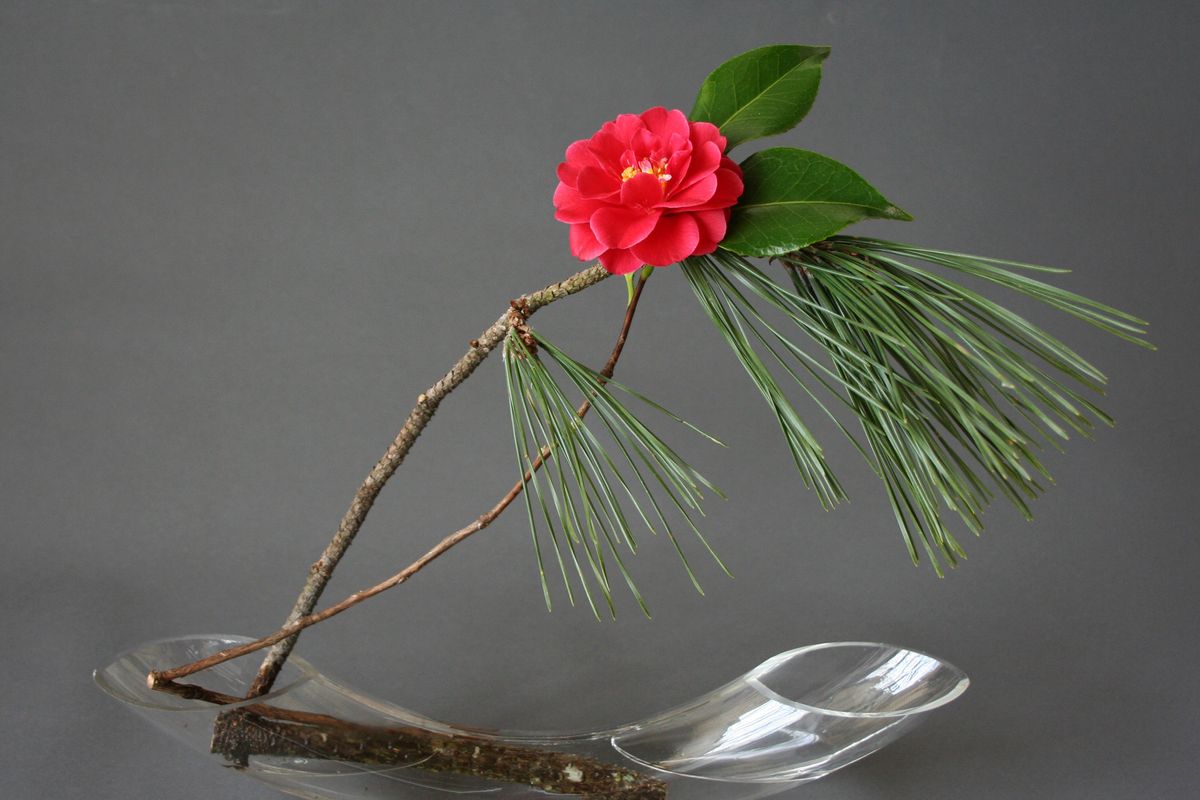Imaginative ikebana
Ancient Japanese art gives minimalist twist to holiday arrangements

Holiday decorations in the U.S. are often symmetrical: Two candles on either side of the mantel, a round wreath in the center of the door, a centerpiece with matching sprigs of holly and pine on each side.
The ancient Japanese art of ikebana, or flower arranging, can provide festive sparkle and color, too, with a much more modern feel.
“The three basic tenets are line, movement and open space,” said Eileen Kay, a retired elementary-school teacher in Boulder, Colorado, who has been studying ikebana for years. “Most people go to the store and buy a bunch of flowers. But there’s no line. The line could be a piece of ivy, a ribbon, anything that lends itself to visual flow.”
Mastering ikebana requires years of training, and there are many methods of approaching the art. The Sogetsu school of flower arranging, one of the largest and most accessible, teaches that anyone can arrange ikebana and with almost anything.
Even for the uninitiated, a few basic tools and principles are sufficient to begin experimenting at home with this different aesthetic – just in time for holiday decor.
“The biggest difference between Western arrangements and ikebana is asymmetry,” said Kimi Quinn, a Sogetsu-certified practitioner who has been designing ikebana arrangements in the U.S. and Japan for more than 20 years. “Ikebana is about capturing the universe and nature. Nothing in the natural world is symmetrical.”
In ikebana, the empty space between branches is as important as the branches themselves.
“It’s like that Zen question asking about the sound of one hand clapping. The answer is silence. Space,” Quinn said.
Many ikebana arrangements mix and match tall tree branches and much smaller flowers with no perfectly vertical or horizontal lines, plenty of space in between and, if a low dish is used, the water often in view.
To begin, all that’s needed is a heavy pin board (kenzan) or a block of flower-arranging sponge, available at craft and floral-supply stores, and a low salad bowl or platter. The container should be filled with just enough water to barely cover the pin board or sponge.
You might start with a decorative branch for a long defining line, a medium flower or branch and a shorter flower, and a large leaf or some other small flower to help cover the pin board.
For the holidays, bare branches painted silver, gold or white are a good choice, as are pine, holly or even red roses.
In general, “the longest stem should be twice as long as the container is wide,” Quinn said. “The medium stem should be around three-quarters the length of the longer branch, and the shorter stem should be around half the length of the medium stem.”
Before arranging the stems and branches, trim excess foliage, and trim the stems while they are submerged in water. They should be clipped at an angle for tree branches and straight across for flower stems, Quinn said.
Ikebana displays typically last only three to five days.
“It’s so sad when they go because I’ve put so much heart into them,” Quinn said. “But appreciating that fleeting beauty is really the essence of what it’s all about.”